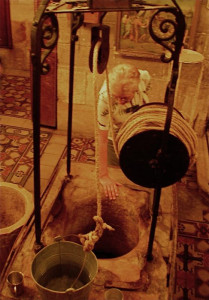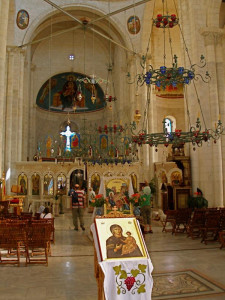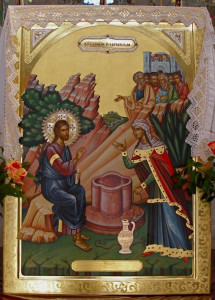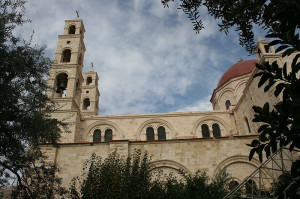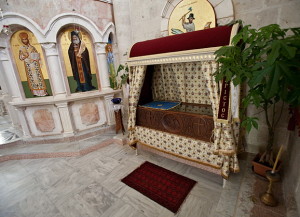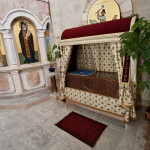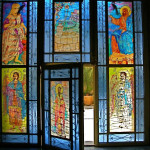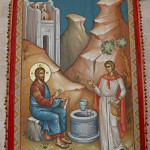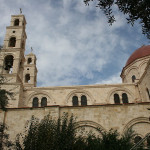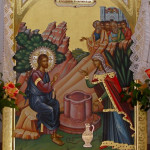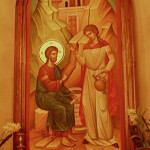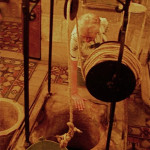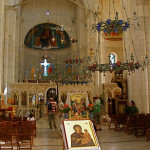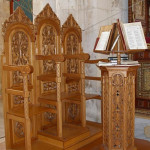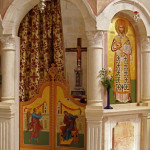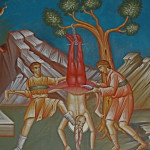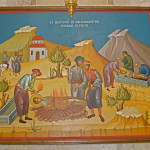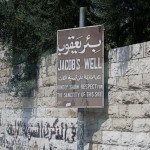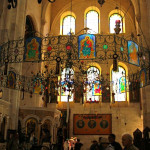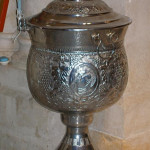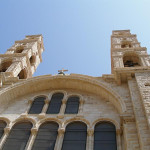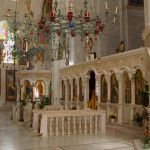West Bank
Jacob’s Well, where Jesus asked a Samaritan woman for a drink and offered her “living water”, lies in the crypt of a modern Greek Orthodox church at Nablus in the West Bank.
It is often considered the most authentic site in the Holy Land — since no one can move a well that was originally more than 40 metres deep.
Jewish, Samaritan, Christian and Muslim traditions all associate the well with Jacob.
The location, at the entrance to a mountain pass between Mount Gerizim and Mount Ebal, is 2km east of Nablus. It is near the archaeological site of Tell Balata — thought to be the biblical Shechem — and about 63km north of Jerusalem.
It was at Shechem that the patriarch Jacob bought “the land on which he had pitched his tent” (Genesis 33:19).
The Samaritan woman reminded Jesus that Jacob “gave us the well, and with his sons and his flocks drank from it”. He told her he was the promised Messiah, and she and many residents of her village believed in him. (John 4:5-42)
Samaritan woman venerated as martyr
Access to Jacob’s Well is by entering the Church of St Photina and descending stairs in front of the iconostasis to the crypt.
Photina (Svetlana in Russian) is the name Orthodox tradition has given to the Samaritan woman. She is venerated as a martyr who was flayed alive and thrown down a well in Rome by the emperor Nero.
A masonry structure surrounds the mouth of the well. On it stands a metal-framed pulley with a coil of rope long enough to reach the water.
A neck section about 50cm across and 1.2 metres deep opens into a shaft about 2.5 metres in diameter, hewn through solid rock.
Though the Samaritan woman told Jesus “the well is deep” (John 4:11), measurements of the depth have varied over the years, due to accumulation of debris (and stones dropped by curious visitors).
A depth of more than 40 metres recorded in 1935 had reduced to something over 20 metres by the 21st century. In ancient times the well was sunk much deeper, probably twice as far.
At times Jacob’s Well has been dry in summer.
Samaria was a ‘no-go’ area
Because of friction between Jews and Samaritans, the territory of Samaria was usually a “no-go” area for Galileans travelling to or from Jerusalem.
The Gospel of Luke (9:51-55) tells of a Samaritan village that refused to receive Jesus because he was going to Jerusalem (on that occasion two of his disciples wanted to bring fire from heaven down on the village).
Samaritans have their origins in Judaism but, as the woman at the well pointed out to Jesus (John 4:20), they worship on Mount Gerizim rather than in Jerusalem.
They also regard Moses as the only prophet and accept only the first five books of the Old Testament (the Books of Moses, or the Torah).
The Samaritans at one time numbered in the hundreds of thousands but by 2007 only 700 remained, living mostly at Mount Gerizim and near Tel Aviv.
Succession of churches on the site
Pilgrims’ writings refer to Christian veneration of Jacob’s Well from the 3rd century. The earliest source, the anonymous Pilgrim of Bordeaux, mentions a bath (presumed to be a baptistry) that took its water from the well.
A cruciform church built around 380 was the first of a succession of churches erected over the well. One of them appears in the 6th-century Madaba mosaic map.
In 1860 the Greek Orthodox Church acquired the property and began restoring the crypt. Construction of a new church was hindered by the 1917 Russian Revolution, which halted Russian funding, and by an earthquake in 1927.
The present church, completed in 2007, is modelled on a basilica from the Crusader era. In an attractive setting of trees and pot plants, it is well-lit, spacious and airy — a contrast to older Orthodox churches in the Holy Land.
Framed icons in modern style and bright colours are fixed to walls and ceilings, rather than being rendered on to these surfaces.
Place of conflict and violence
Nablus was an arena of conflict between militant Palestinians and the Israel Defence Force during the Second Intifada, between 2000 and 2005, but has since rebuilt itself as an industrial and commercial centre.
Jacob’s Well has also been a site of contention and violence. In 1979 a Zionist group claimed it as a Jewish holy place and demanded that crosses and icons be removed. A week later the custodian, Archimandrite Philoumenos, was butchered to death in the crypt and the church was desecrated. No one was ever convicted of his murder.
The remains of Archimandrite Philoumenos are venerated in the right-hand chapel of the Church of St Photina.
North of Jacob’s Well is a related site, Joseph’s Tomb. This white-domed tomb is believed to be where the bones of Jacob’s son Joseph were buried after being brought back from Egypt (Joshua 24:32).
In Scripture: Jesus and the woman at the well: John 4:5-42
Administered by: Greek Orthodox Church
Tel.: 972-2-2375123
Open: 9am-1pm, 2pm-5pm; ring the bell
- Remains of Archimandrite Philoumenos in Church of St Photina (© vizAziz)
- Stained glass windows at the entrance to Church of St Photina (Seetheholyland.net)
- Icon of Jesus with Samaritan woman, in Church of St Photina (Seetheholyland.net)
- Church of St Photina at Jacob’s Well (Tiamat / Wikimedia)
- Icon of Jesus and Samaritan woman, in Church of St Photina (Seetheholyland.net)
- Icon of Jesus with Samaritan woman, in Church of St Photina (Seetheholyland.net)
- Mouth of Jacob’s Well (Seetheholyland.net)
- Interior of Church of St Photina (Seetheholyland.net)
- Carved seats and lectern in Church of St Photina (Seetheholyland.net)
- Entry to alcove on right of iconostasis, in Church of St Photina (Seetheholyland.net)
- Martyr being flayed alive, in Church of St Photina (Seetheholyland.net)
- Martyr being burnt on a pyre, in Church of St Photina (Seetheholyland.net)
- Notice at Jacob’s Well (Seetheholyland.net)
- Fresco of Christ the Pantokrator in dome of Church of St Photina (Seetheholyland.net)
- Suspended decorations in Church of St Photina (Seetheholyland.net)
- Baptismal font in Church of St Photina (Seetheholyland.net)
- Facade of Church of St Photina (Seetheholyland.net)
- Stairs to crypt in front of iconostasis, in Church of St Photina (Seetheholyland.net)
References
Charlesworth, James H.: The Millennium Guide for Pilgrims to the Holy Land (BIBAL Press, 2000)
Freeman-Grenville, G. S. P.: The Holy Land: A Pilgrim’s Guide to Israel, Jordan and the Sinai (Continuum Publishing, 1996)
Gonen, Rivka: Biblical Holy Places: An illustrated guide (Collier Macmillan, 1987)
Murphy-O’Connor, Jerome: The Holy Land: An Oxford Archaeological Guide from Earliest Times to 1700 (Oxford University Press, 2005)
Walker, Peter: In the Steps of Jesus (Zondervan, 2006)
Wareham, Norman, and Gill, Jill: Every Pilgrim’s Guide to the Holy Land (Canterbury Press, 1996)
External links
The Geographical, Historical & Spiritual Significance of Shechem (Biblical Studies Foundation)
Samaritans (Wikipedia)
The Samaritans (The Israelite Samaritan Community in Israel)

